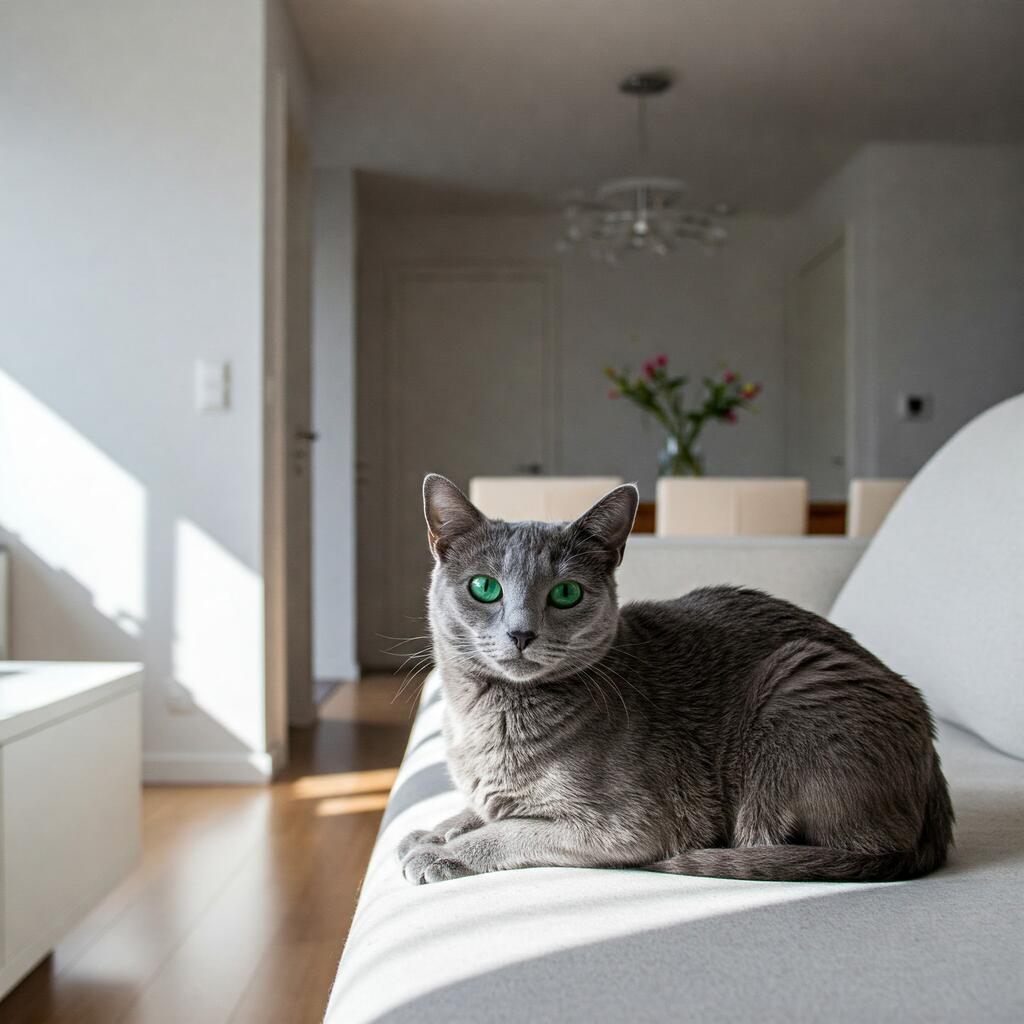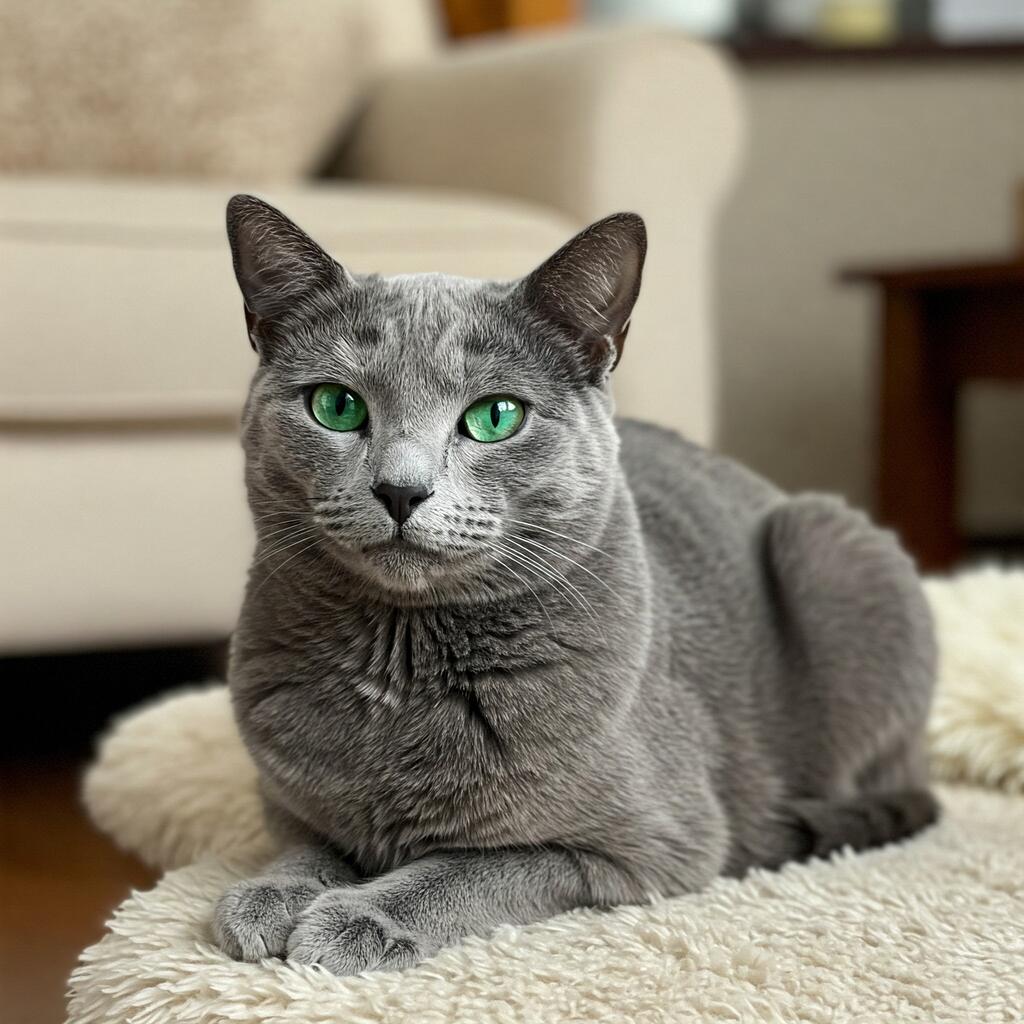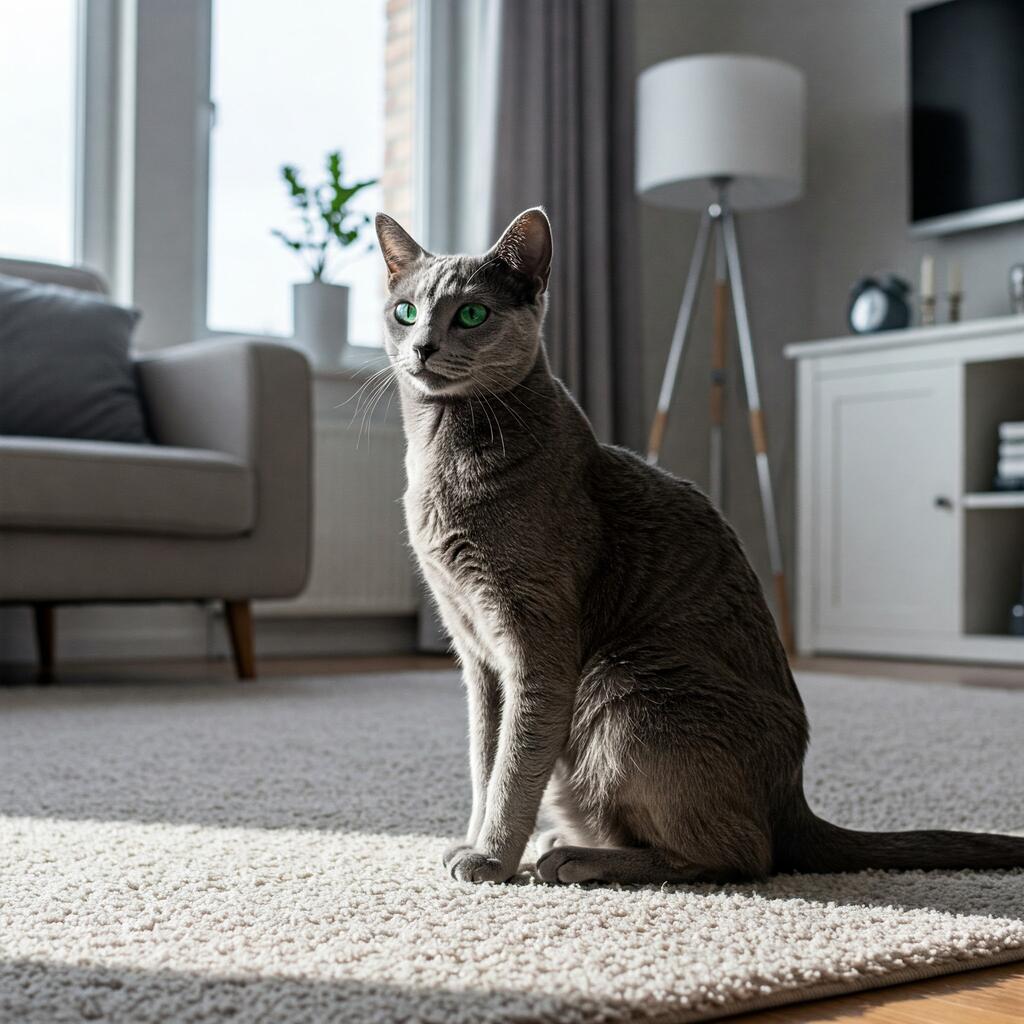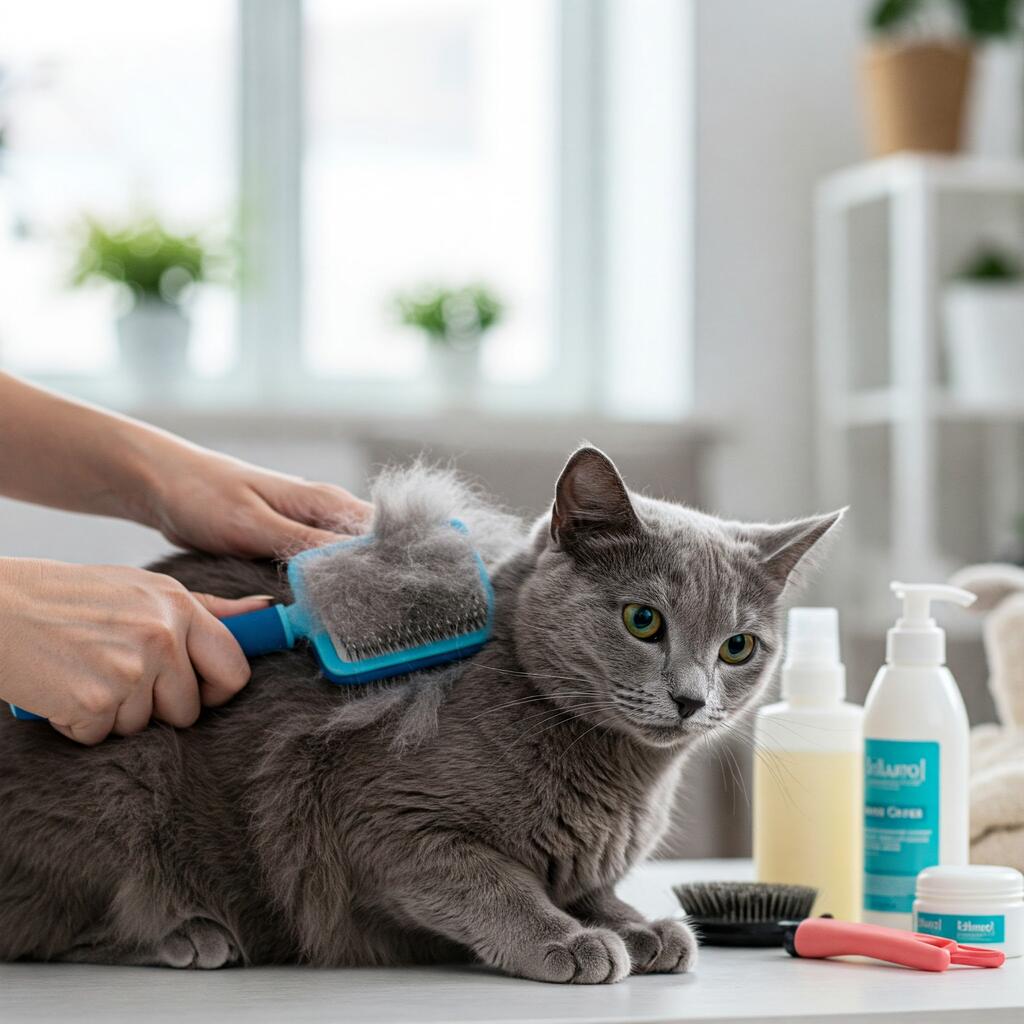
Russian Blue Cat Breed: A Comprehensive Guide
The origins of the Cat Russian Blue are not very clear, it actually appeared in the early 1900s in England. It is said that it was brought to England by merchant ships from northern Russia, specifically from the city of Arkhangelsk (Archangel). Sailors used to board these cats to protect food supplies from rats on ships. In Russia, these cats were formerly bred for their fur, similar to that of the otter, and this fur was used to make coats, collars for coats and muffs.
Other legends also originated in Russia. It is said that these cats in the Tsar's court were placed in children's rooms because they were said to have the power to drive away evil spirits. Their particular beauty attracted the Tsar and his court, and they were in fact called the Tsar's Cat. Later it also attracted the English court.
During the world wars, especially during the second one like many other cat breeds, it risked extinction and it was British breeders who prevented its disappearance during those dark years.
Character of the Cat Russian Blue

It is the typical flat cat, which is not very destructive, loves comfort and is able to spend a lot of time lying down in the same place without getting bored. It does not fear loneliness much, but if it is left alone for most of the day, it would be good if it had a companion of its breed or even a four-legged friend to help it fight loneliness, but at the same time it needs a rather quiet friend.
These cats do not suffer from jealousy and are well adapted to life with other animals provided, of course, that they are not too turbulent. They are very shy instead with strangers, so much so that when someone they do not know comes to the house they tend to hide. It is a cat that likes to play a lot, so it is also good with children as long as they are not too lively. He is very affectionate both with his human and with the other members of the family.
He is never intrusive, on the contrary he knows when to appear and when to disappear, he is also very polite so you do not risk finding surprises when you return home where he has been alone for several hours. The Cat Russian Blue is the classic flat cat although it does not disdain the outdoors and is not too afraid of the cold in honour of its origin, but likes it more comfortable, soft and warm.
Appearance of the Cat Russian Blue

The legs are long and thin-boned, the paws harmoniously small, the tail is long and tapered at the top.
The head is broad and has the shape of a blunt triangle with full cheeks, the ears are pointed and rather large, the eyes are almond-shaped, well spaced from each other and a very expressive deep green colour. The chin is strong with the corners of the mouth turned upwards, so it always gives the impression of smiling.
But it is the coat that is this cat's strong point. The coat is short, dense, with abundant undercoat. It is silky and soft to the touch. The colour is blue, or more precisely a rather dark and uniform blue-grey with slight silvery highlights.
he Russian Blue has another important peculiarity. Its fur is considered hypoallergenic and is well tolerated even by people suffering from allergies to cat hair.
Care and health of the Cat Russian Blue

It loses a small amount of hair during the moulting period, which is why it needs to be brushed every day during that time, while during the rest of the period a couple of times a week is sufficient.
It has a tendency to put on weight, so the amount of food to be given to it daily must be kept under control.
For the rest, the cares are those necessary for all cats, i.e. vaccinations, cleaning of the ears and cutting of the nails.






















